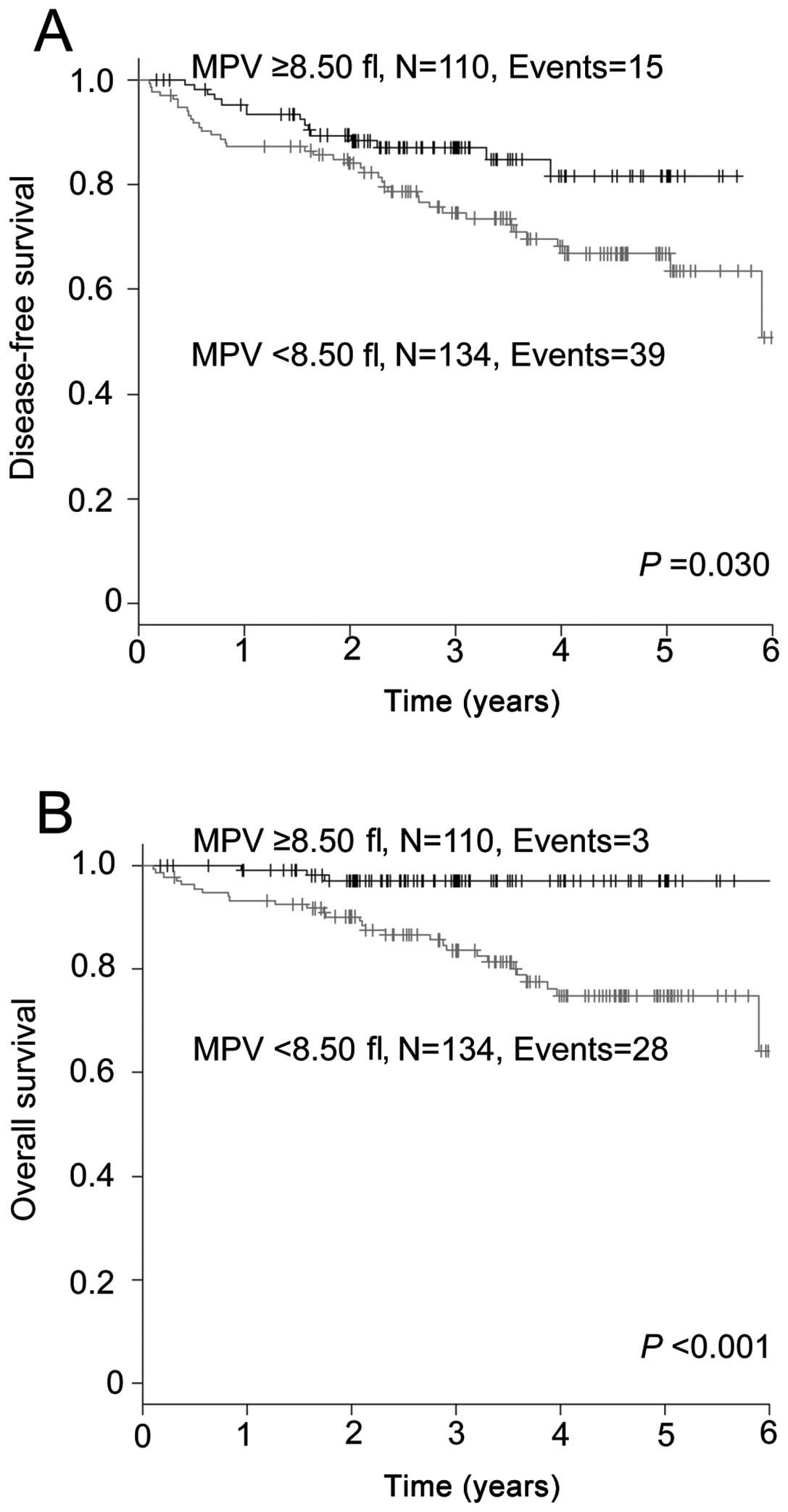Prognostic significance of preoperative mean platelet volume in resected non-small‑cell lung cancer
- Authors:
- Published online on: October 6, 2014 https://doi.org/10.3892/mco.2014.436
- Pages: 197-201
Metrics:
Total
Views: 0 (Spandidos Publications: | PMC Statistics:
)
Total PDF Downloads: 0 (Spandidos Publications: | PMC Statistics:
)
Abstract
An increased mean platelet volume (MPV) is an early marker of platelet activation. MPV was also shown to be associated with the pathophysiological characteristics of various types of cancer. A previous study demonstrated that MPV was significantly associated with the overall survival (OS) of patients with advanced non-small‑cell lung cancer (NSCLC). However, there has been no analysis of the prognostic effect of MPV on patients with resected NSCLC. The aim of this study was to evaluate the contribution of MPV to the survival of patients with completely resected NSCLC. We retrospectively analyzed 308 consecutive patients with NSCLC who underwent curative resection at Kitano Hospital. The associations between MPV and clinicopathological factors were assessed. We also evaluated the effect of MPV on survival, using the two‑tailed log-rank test and the Cox proportional hazards model. a MPV value of 8.50 fl was considered to be the optimal cut-off value for prognosis. A low MPV was not associated with any other clinicopathological factors. The two-tailed log-rank test demonstrated that patients with a low MPV experienced a shorter disease-free survival (DFS) and overall survival (OS) (P=0.011 and 0.001, respectively), compared to those with a high MPV. The multivariate analysis demonstrated that a low MPV was an independent unfavorable prognostic factor for DFS and OS [hazard ratio (HR)=1.713; 95% confidence interval (CI): 1.070‑2.742, P=0.025; and HR=2.835; 95% CI: 1.304‑6.163, P=0.009, respectively)]. Therefore, we demonstrated that a low MPV predicted an unfavorable prognosis in patients with NSCLC following curative resection.













